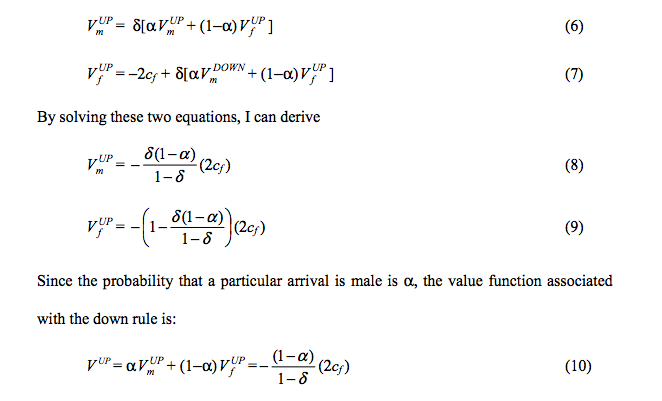The Down Rule

When it comes to academic research, especially when science or statistics are involved, the math doesn’t involve a lot of actual numbers. It is well beyond the high school level algebra which marks the peak of many of our formal educations and, well, looks like the stuff above. That’s from an economic analysis conducted by Jay Pil Choi, a professor at Michigan State University, from 2002. It may look more like Greek than it does arithmetic to you, depending on how far your math education advanced. (To be fair, there is a lot of actual Greek in the equations above.) Like a lot of academic research, these equations help us gain a deeper understanding of life generally and the universe around us. Sometimes, research like this saves lives, improves outcomes, and changes the world for the better — all of which are a very good reason to encourage more math education, such that more of us can understand the equations above.
This is not one of those times.
Professor Choi wasn’t trying to save the world. He was trying to save, well, maybe a relationship or two? The equation is part of a paper, which, well, let’s let Professor Choi tee it up for us. Here’s the title and subtitle of his paper (available here, pdf), as well as an excerpt from the abstract:
Up or Down?
A Male Economist’s Manifesto on the Toilet Seat Etiquette
[. . .]
This paper develops an economic analysis of the toilet seat etiquette, that is, whether the toilet seat should be left up or down. I investigate whether there is any efficiency justification for the presumption that men should leave the toilet seat down after use.
Life-changing stuff, to be sure.
Dr. Choi’s paper, of course, isn’t intended to be super-serious. But it does treat the problem with the critical eye (and the odd sense of humor) of an economics researcher. His basic approach asks whether it is efficient to insist that, every time a man uses a toilet while standing, the man in question be required to put the seat down after use. He calls this “the down rule” and compares it to the “up rule” — a universe where social mores require a person, male or female, to leave the seat up after use. (Economists have a habit of creating entirely implausible universes.) He also compares the down rule and the up rule to something he calls the “selfish rule,” where the last user of the toilet leaves the seat in whatever position its in after use. Dr. Choi then looks to see how much each rule inconveniences a would-be toilet-goer. For example, a male who wants to use the toilet while standing is twice inconvenienced under the down rule — he has to lift the lid beforehand and then put it down after — but not at all under the up rule, and only once, max (depending on how he found it), under the status quo rule.
Using these rules, Dr. Choi developed a series of equations to determine which of the three rules was the best. The equation above is one of those he used, and ultimately, he concluded that “the selfish rule always dominates the other two if the inconvenience costs of changing the toilet seat position are the same across genders.” Choi concludes by comparing the toilet seat to a car seat — “a car can be shared by family members who need different configurations of the driver seat. The same logic implies that it would be most efficient to leave the seat position as it was used last if the inconvenience costs of reconfiguring the position is the same across family members.”
Of course, Choi’s findings are based on a set of faulty assumptions. For example, it’s hard to fall into a toilet when you’re using it while standing, but ask anyone who has tried to sit with the inner ring up and, yeah, that’s not a pleasant experience. And Choi wrote his paper in 2002, five years before anyone dropped an iPhone (released in June of 2007) into an open toilet.
Bonus fact: All this seat up, seat down stuff may be culturally unnecessary for a different reason: there’s likely no health benefits standing, as mental_floss reports. It’s most likely a “cultural or psychological preference.”
From the Archives: Americans Flush Five Cents Away, Every Day: One of the first issues of Now I Know. (So it might suck.)
Related: “The Ultimate Book of Bathroom Etiquette and Humor” by Larry A. Glanz. Two reviews, reach of five stars. (But really, if you’re looking for a bathroom reader, buy mine.)
